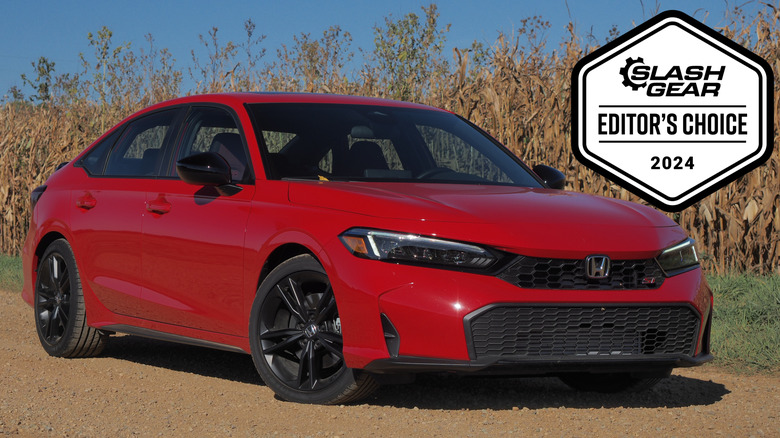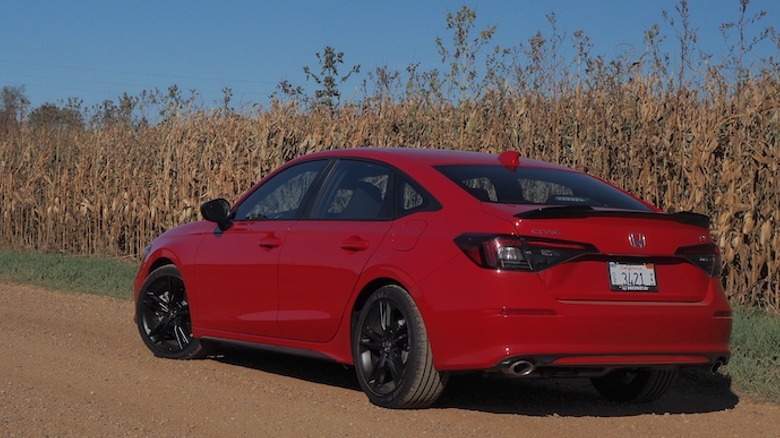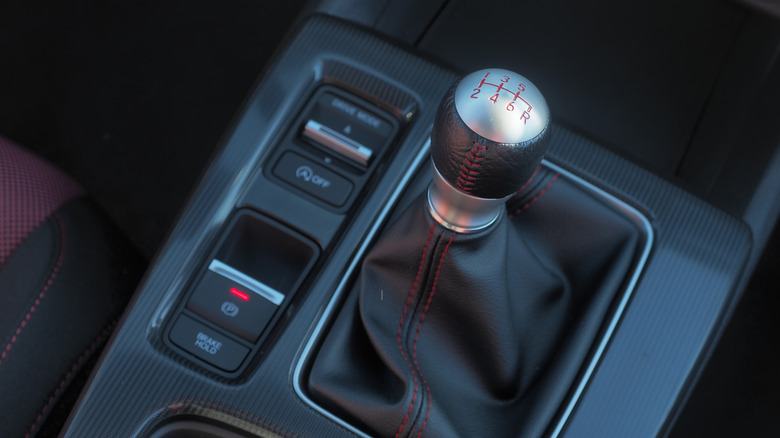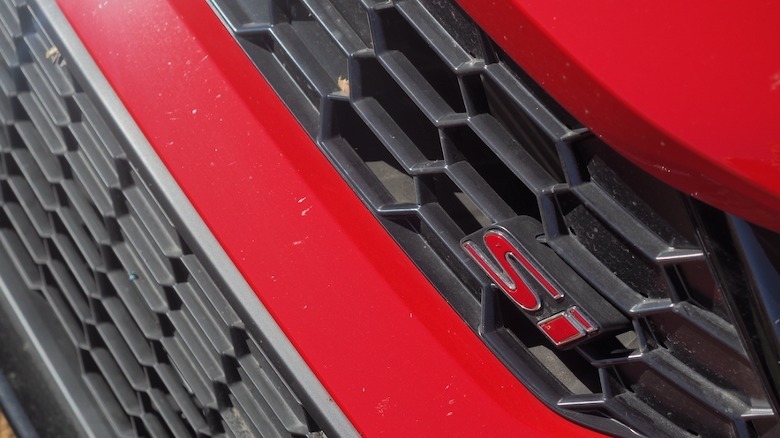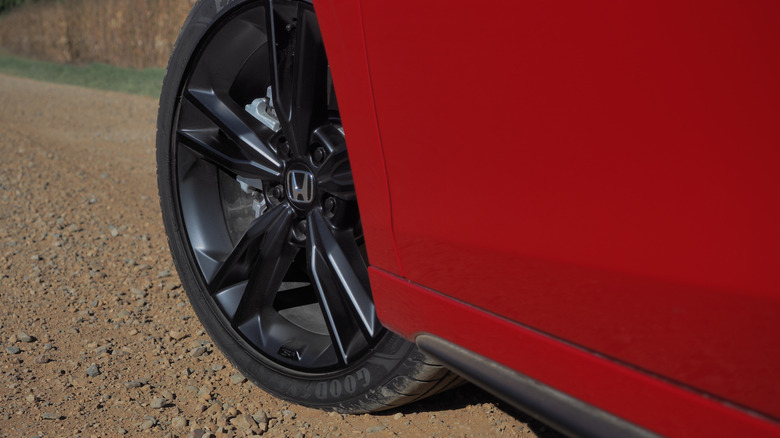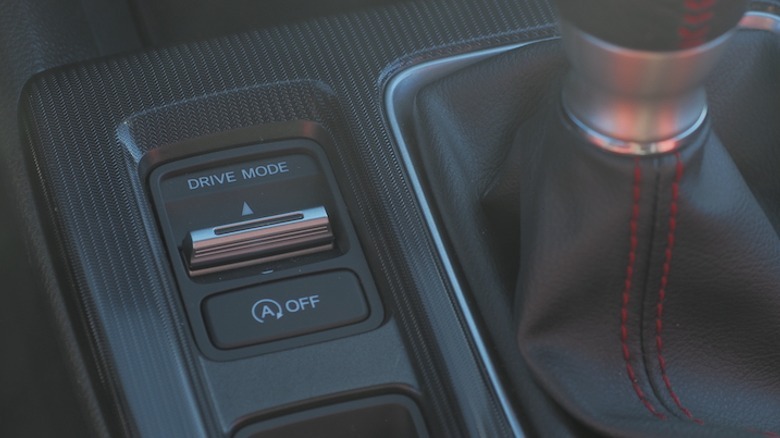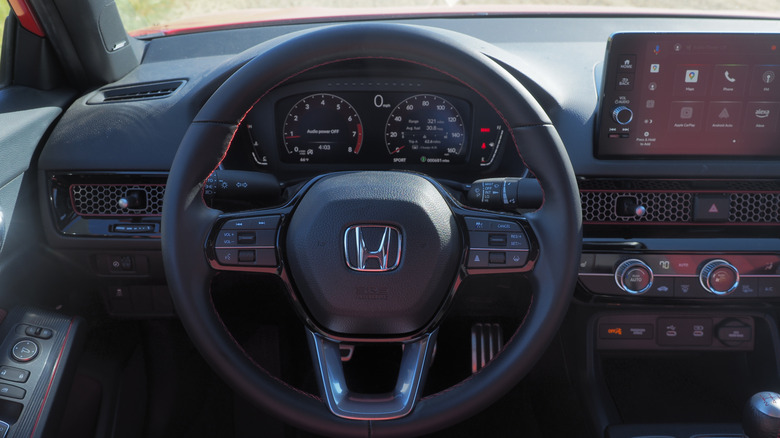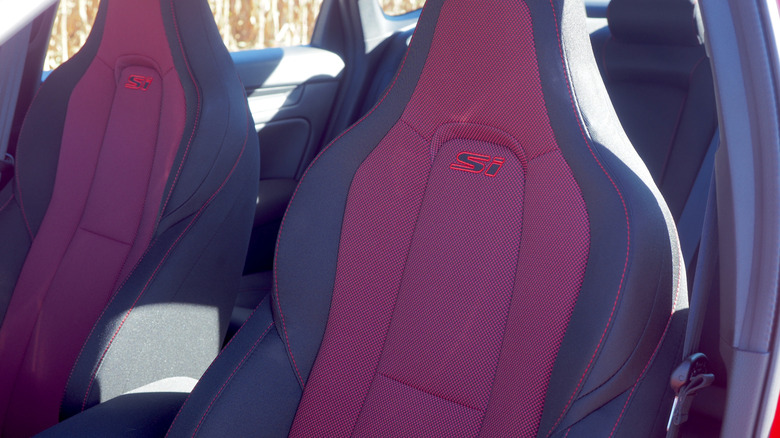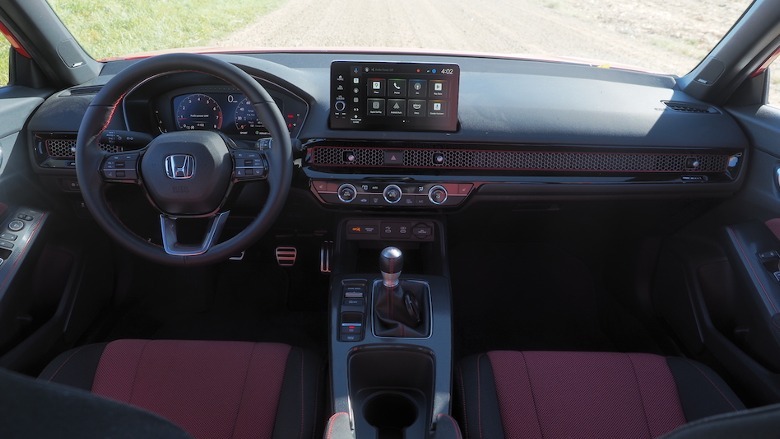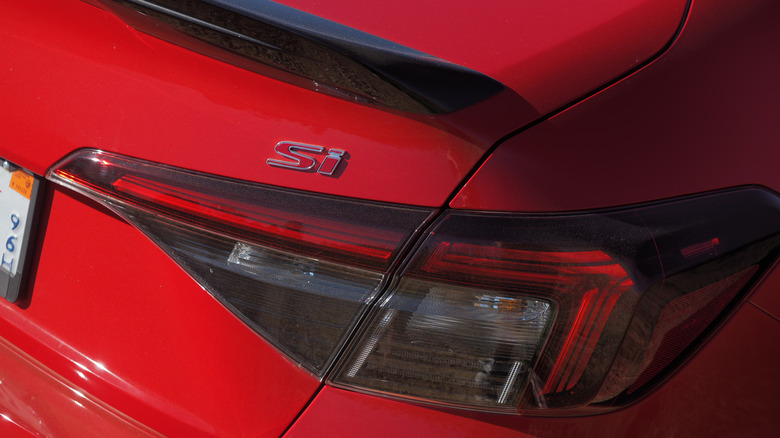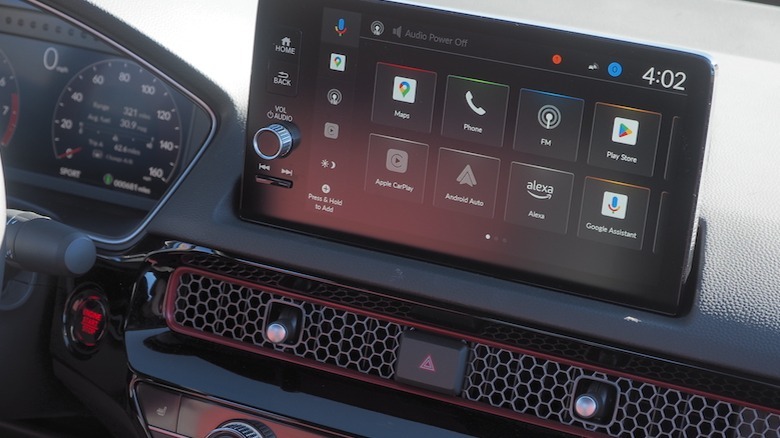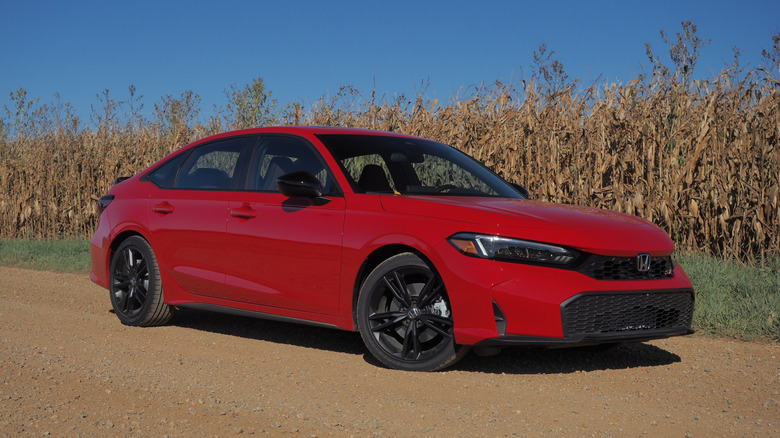2025 Honda Civic Si Review: You Really Don't Need The Type R
- Turbo-four engine is punchy and fun
- Standard stick-shift is a dream to stir
- Well-equipped and distinctive cabin
- Affordable and practical
- Some luxury features aren’t on the options sheet
In a fair and just world, driving enthusiasts would be camped outside Honda HQ, cheering whenever an engineer walked through the door. In an age where fans of affordable, fun cars are — not without reason — concerned that the pickings may get slim as SUVs and trucks continue to grow in popularity, it's a marvel that Honda has not one but two relatively cheap, grin-provoking options in its lineup.
The Civic might have a well-earned reputation for its perfect-first-car blend of price and reliability, but the 2025 Civic Si — like the more expensive Civic Type R — is lurking around the corner hoping to win you over with whimsy. It doesn't hurt that Honda's 11th generation car is a dynamically poised and aesthetically pleasing place to start, either. Throw on the Si's tasteful rear spoiler, dual chrome exhaust tips, and the standard 18-inch matte black alloy wheels, and the result is restrained but not boring.
Honda keeps things simple with the options. There are four paint colors — black, red, white, and silver — two wheel designs, and one powertrain. Of course, the big choice is in the cross-shopping.
Hopefully you can drive stick
While the 2025 Civic Sedan starts at $24,250 (plus $1,095 destination), you'll spend almost $6k more to get behind the wheel of a new Civic Si. Still, its $29,950 (plus destination) starting price is far short of the near-$45k that Honda asks for a Civic Type R (and it's less than a GR Corolla or a Jetta GLI, too).
Unlike the 2.0-liter inline-four in the regular Civic — now also offered in a capable 2025 Civic Hybrid form — the Civic Si gets a 1.5-liter turbocharged four-cylinder. It offers 200 horsepower and 192 lb-ft of torque, and if you're not okay with a stick-shift then Honda leaves you out in the cold. The six-speed manual is standard, and (unlike Toyota with the 2025 GR Corolla) there's no automatic option, here.
Honda does have prior form, here: the Civic Type R only comes as a manual, too. Unsurprisingly, the bigger budget the Type R demands also unlocks extra power: 315 hp and 310 lb-ft from the turbocharged 2.0L. Both, though, get a helical limited-slip differential, that can funnel power to the left or right front wheels.
Learning manuals from the best
Expectations for the Civic Si's stick shift were rightly high: the supremely good manual transmission in the latest Type R had confirmed that Honda knew how to make a good gearbox. The excellent news is that the three-pedal experience in the Si is also a joy.
Neither too light in its throw, nor too notchy. A clutch pedal that's just about perfectly weighted: responsive and swift when you're pushing, but easy enough to avoid being a chore in city traffic. The right length of stick travel, a useful rev-matching system — that blips the gas when you downshift — that doesn't make you sound like an attention seeking boy-racer at the traffic lights (you can turn it off, too), and a tactile leather and metal shift knob.
Hill Start Assist and automatic brake-hold also weigh in to avoid too many day-to-day headaches. If you've avoided manual transmissions because of the thought of dealing with them on your commute, the Civic Si is the answer. Similarly, it'd be a surprisingly good transmission to learn the three-pedal dance on, I suspect. Even if it then might spoil you for the experience in other cars.
The right amount of fast
On a race track, I'm sure I'd miss the Type R's extra horses. Out on public roads, with the goal of keeping my license even as I hunt for fun, the Civic Si's power and torque feel just about ideal. Engagement is demanded, not just requested: you can't coast through, relying on low-end grunt to pull you out of slower corners. Working the gearbox is a necessity.
A small toggle switch notches through the three drive modes on offer: Normal, Sport, and the customizable Individual setting. They adjust throttle response and steering assistance — obviously transmission behavior is down to you — while switching to Sport also turns the dashboard lighting red. The feistiest drive mode isn't so twitchy as to make leaving the Si in Sport an impracticality.
Unlike in the Type R, there are no adaptive dampers here: you get a single tune of the MacPherson strut front and multi-link rear suspension. Honda, as you'd expect, errs on the stiffer side, leaving the Si firm day to day but not crashy. It's dialed in just right for some silliness in the corners, something the automaker encourages with its $300 high-performance Goodyear Eagle F1 Asymmetric 2 summer tire option. They're stickier than the standard all-season rubber.
A distinctive cabin with Honda's best gadgets
Inside, the Civic's pleasant cabin continues to satisfy. The dash-spanning mesh grille — hiding the joystick-adjusted air vents — still looks great; dedicated buttons and knobs handle the single-zone HVAC. There's a 10.2-inch digital driver display topped with upshift lights, a decent Bose audio system, and two USB-C ports (those in the back are out of luck).
One unexpected advantage is that the 2025 Civic Si gets Honda's upgraded infotainment system, running Google built-in — with wireless Apple CarPlay and Android Auto — on a 9-inch touchscreen. The regular Civic only enjoys that in its top, Sport Touring Hybrid trim (from $31,750 plus destination). It means niceties like Google Maps and the Google Assistant; there's also Alexa support. Honda bundles three years of cellular data for the system, too.
There's no leather seat option, Honda opting instead for a black and red cloth. It grips you nicely, and there's standard front seat heating along with matching red detailing on the dashboard, wheel, and shift knob. Where Volkswagen includes leather and ventilated front seats in its (more expensive) 2025 Jetta GLI, I prefer Honda's ergonomics, and its infotainment is definitely prettier and easier to use.
As practical as, well, a Civic
Honda's car is slightly more practical than the Jetta GLI, too, though we're talking by degrees. The 14.4 cu-ft trunk is fine, and expands via the 60/40 split rear bench (the VW has the split seats, but starts out with 14.1 cu-ft). Ironically, for all it's sportier, the hatchback Civic Type R is more capacious than both: 24.5 cu-ft with its rear seat upright.
The EPA says you could see 27 mpg in the city and 37 mpg on the highway from the Civic Si, for 31 mpg combined. Those numbers are a point higher in each category than the Jetta GLI promises, and they're unexpectedly achievable, too. Even after some more spirited driving, I wasn't far off Honda's combined estimate.
As for safety tech, there's blind spot warnings, rear cross-traffic alerts, adaptive cruise control (which remains of limited use for manual cars, of course), collision mitigation braking assistance, lane-keeping assistance, and road departure mitigation. Honda's basic warranty lasts three years, or 36,000 miles, while its powertrain is covered for five years or 60,000 miles.
2025 Honda Civic Si Verdict
There are certainly faster cars than the 2025 Civic Si, and more powerful ones. Honda's recipe here for affordability, smile-provocation, and enough equipment and refinement to not make everyday trips feel like a chore is a winning one, however. It nails the basics — a punchy engine with little in the way of turbo lag, paired with just-right suspension and that stunning manual gearbox — and then wraps it in just the right degree of extras.
The result is a car which is genuinely entertaining, and which feels worth every cent of its $31,345 as-tested price tag. It's a reminder that — despite what cynics might say about the death of fun in the modern motoring age, and the dearth of attainable models that don't feel like appliance-like compromise — there are still charming options out there which don't sacrifice daily-driver functionality. Oh, and which come with a decent warranty and solid fuel economy, too.
What's surprising, then, isn't that the new Civic Si is so good, but how it starts to make you question whether you really need that Type R. It's the impish little sibling, that wins you over with mischievous energy, even if it can't quite match the capabilities of its bigger brother.
